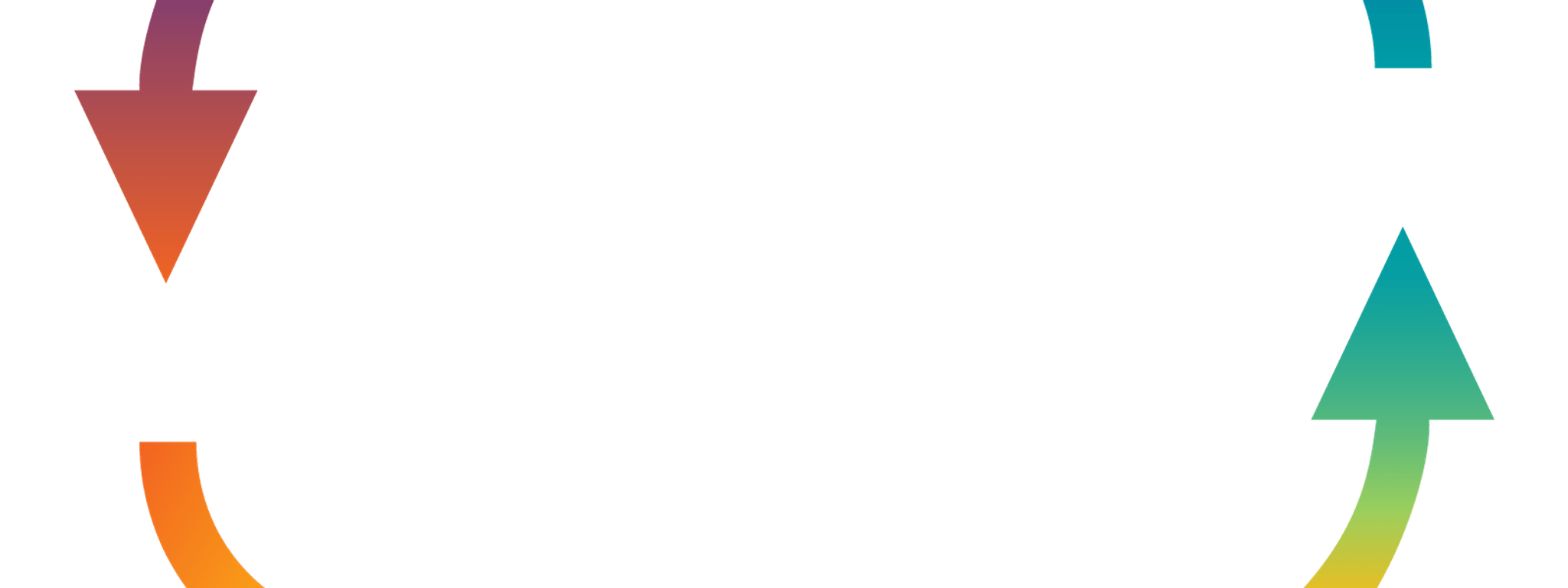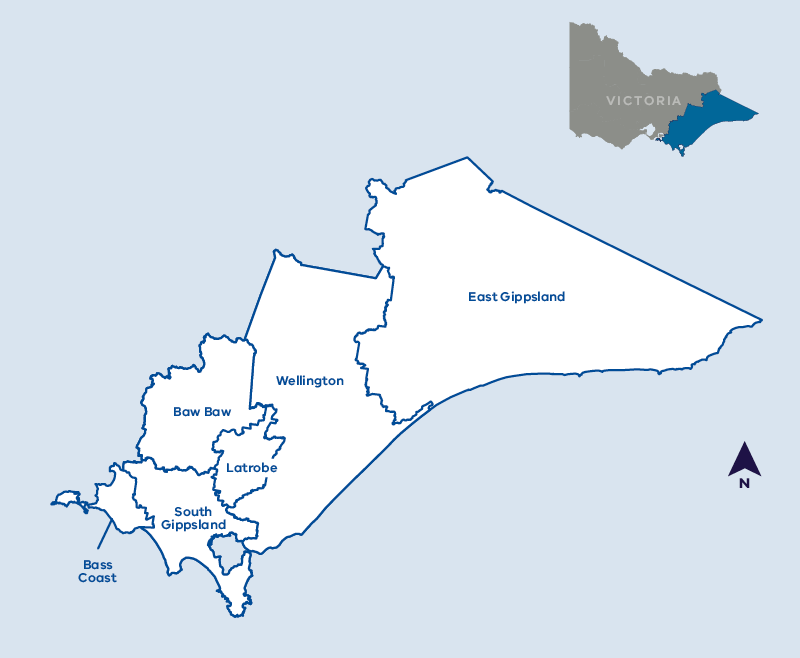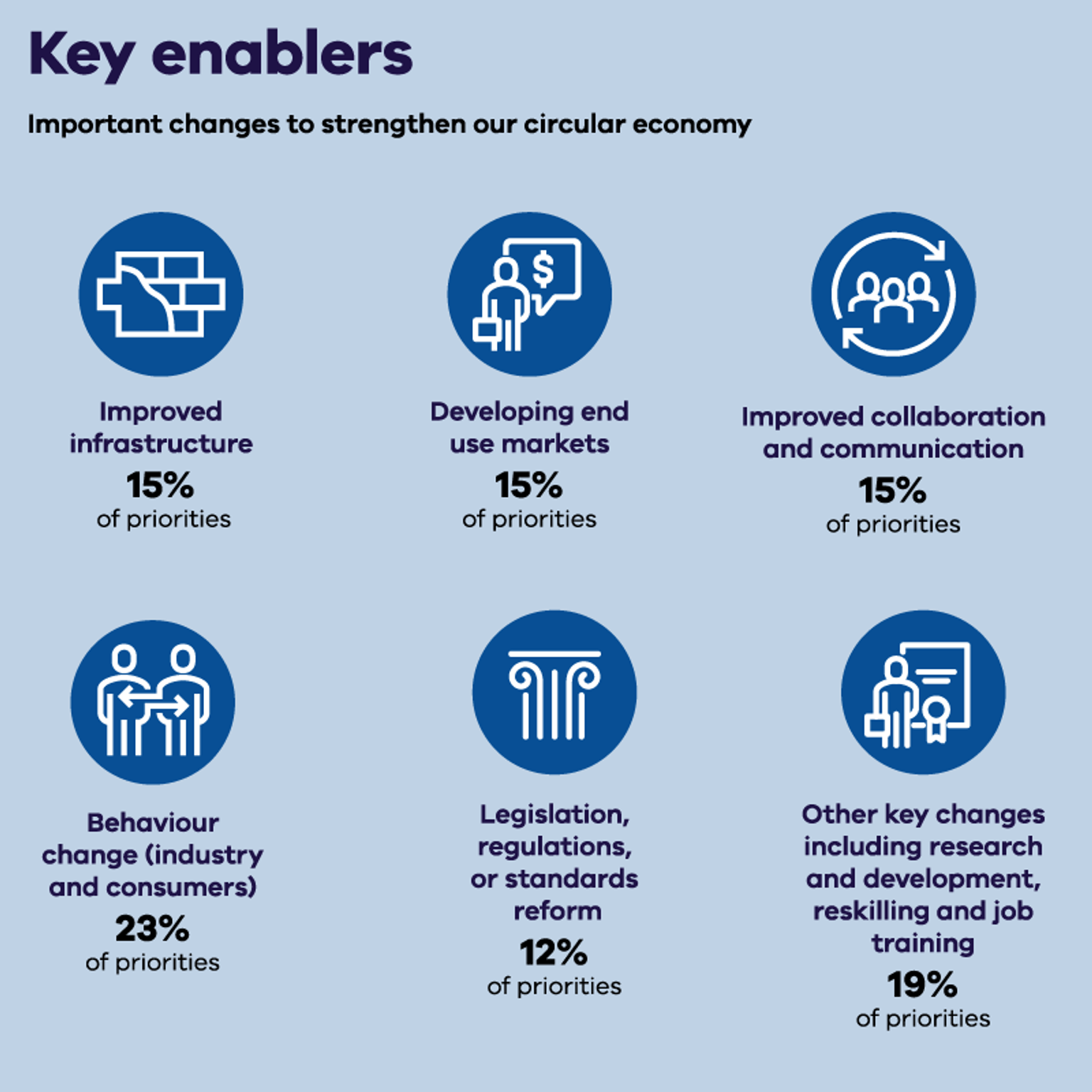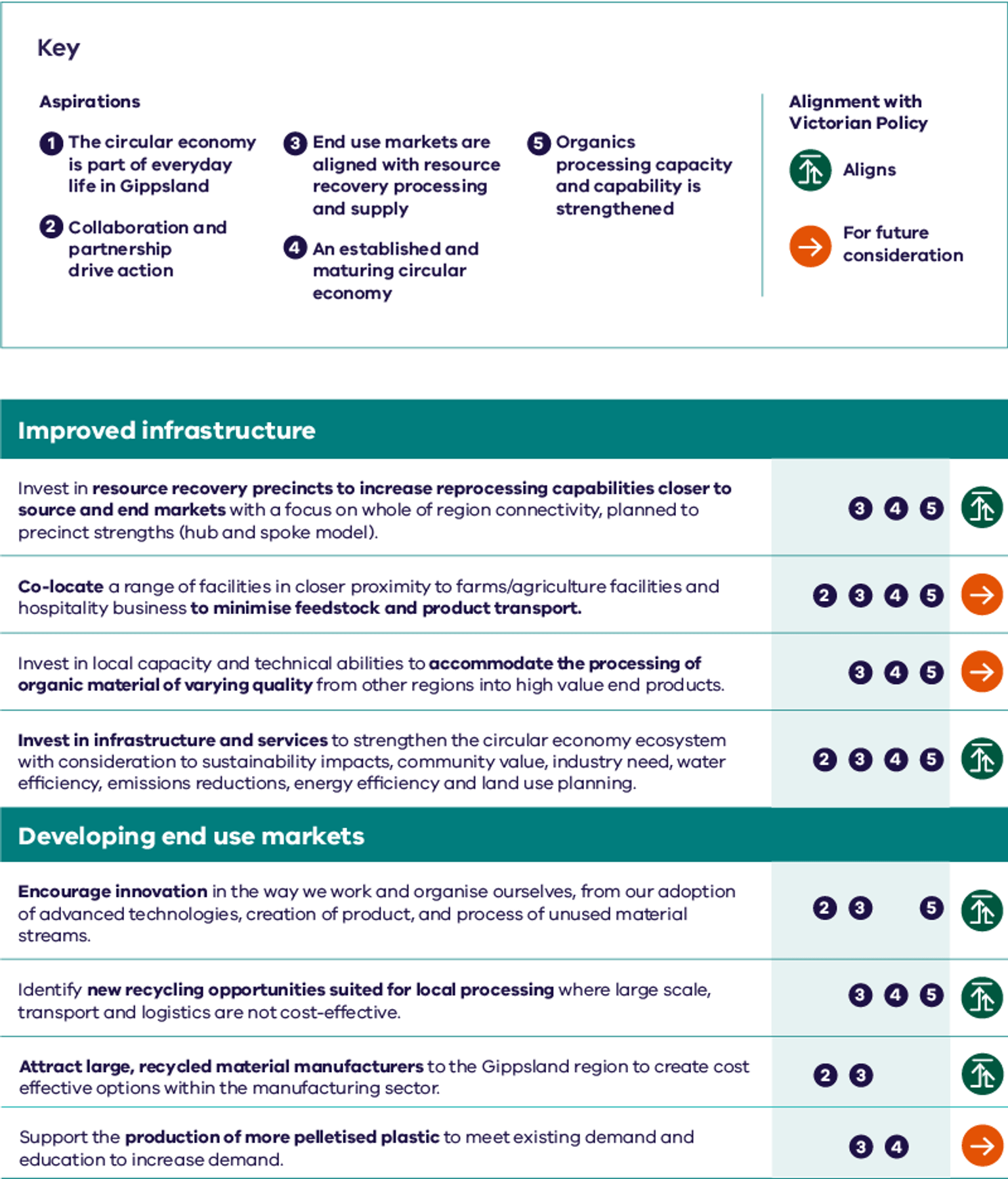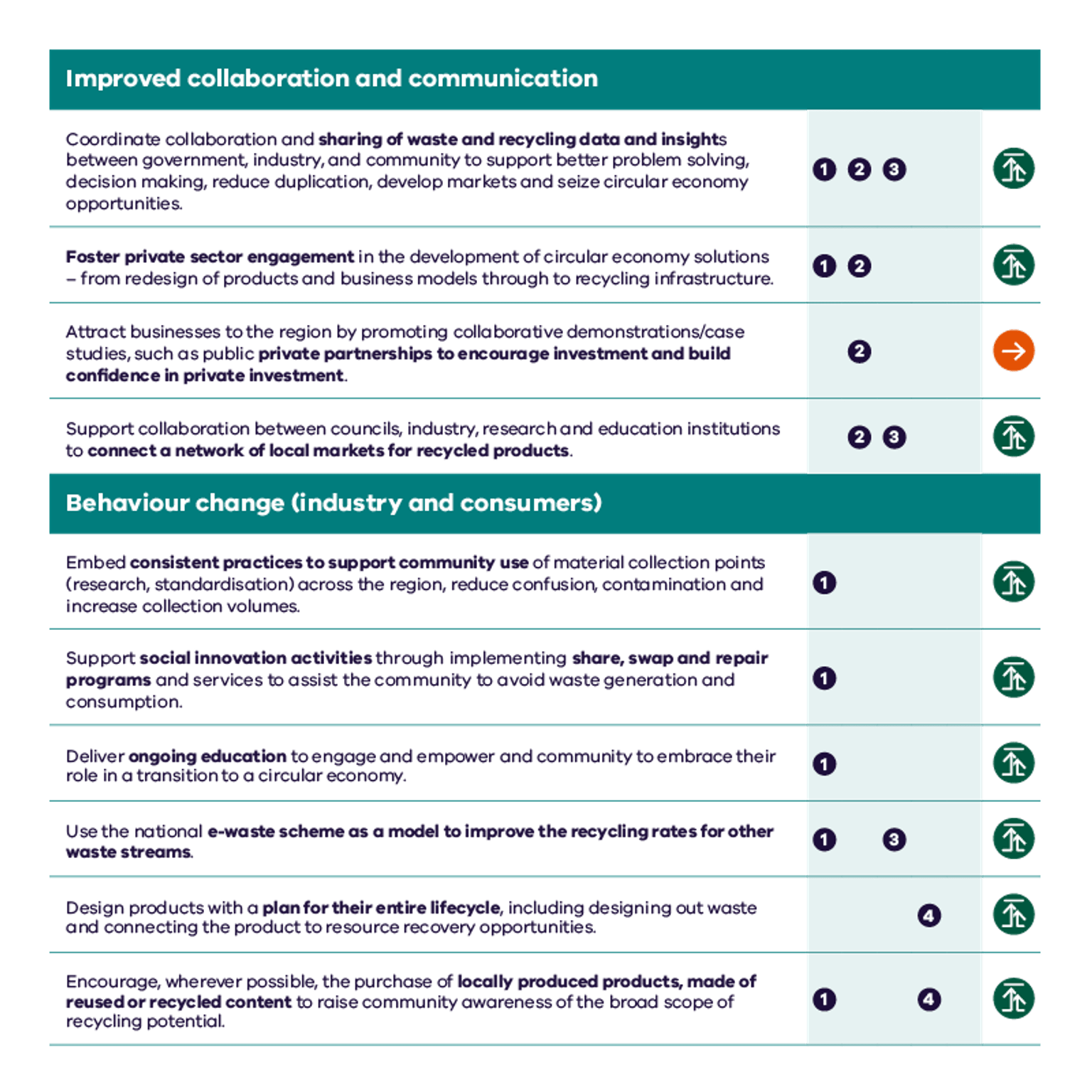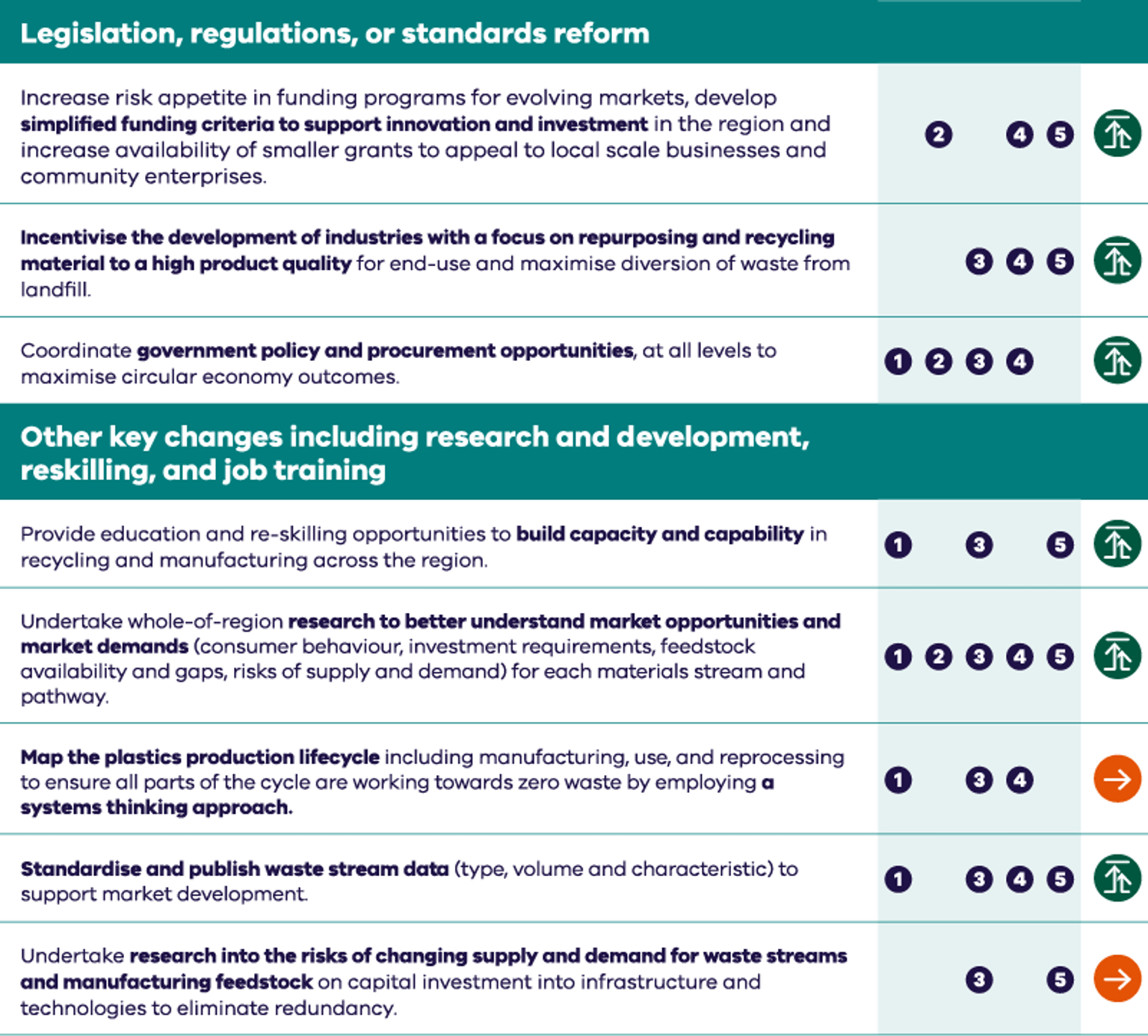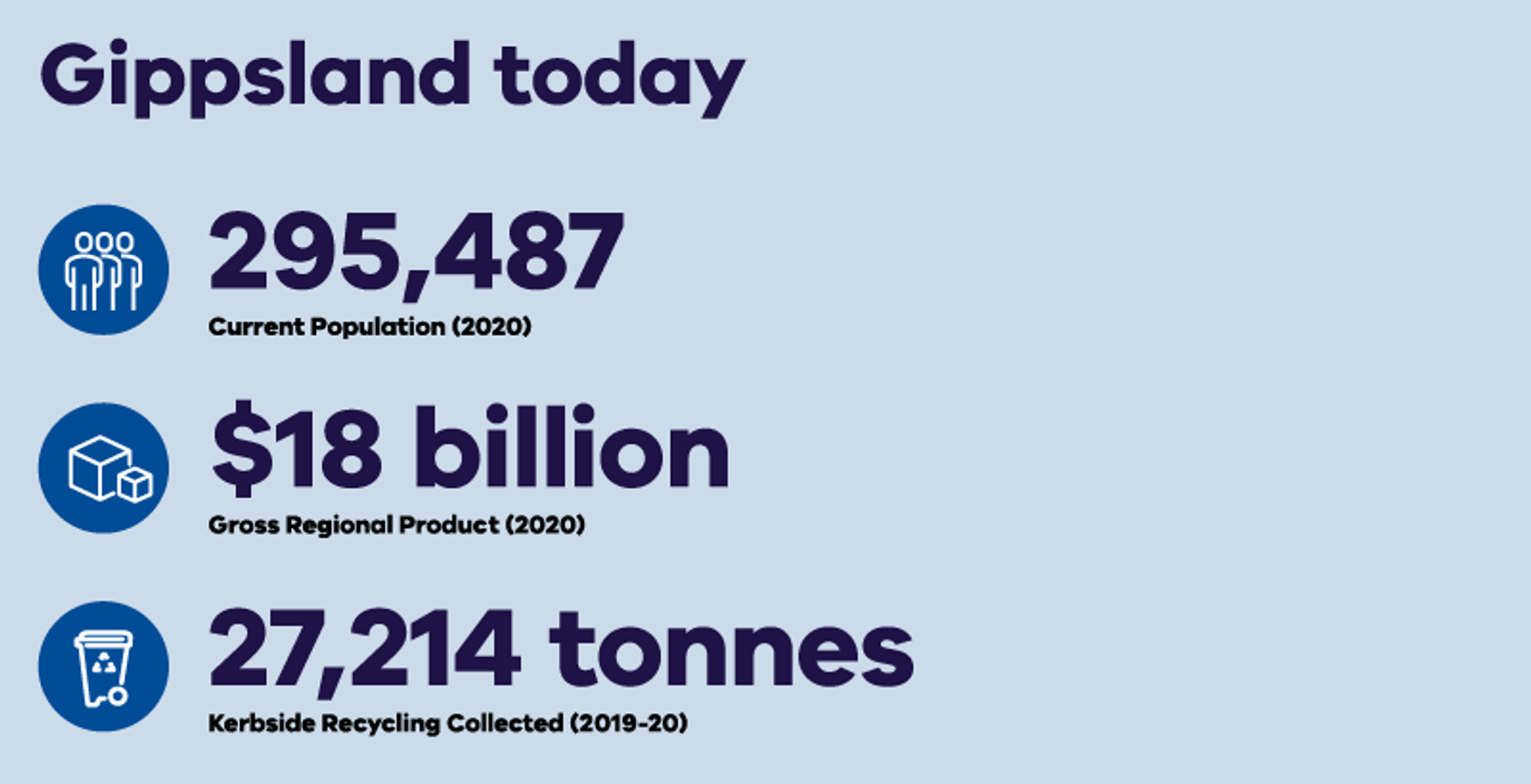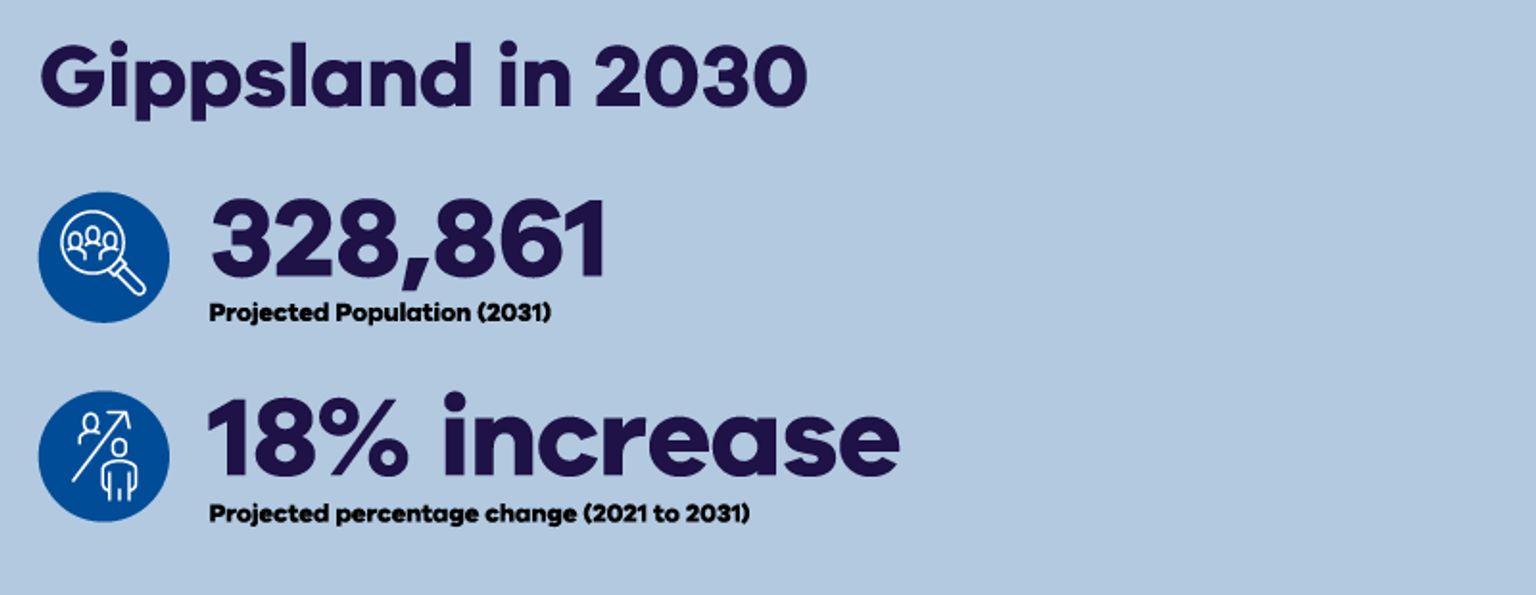The Gippsland regional circular economy plan sets out Gippsland’s aspirations to 2030 for a sustainable and thriving circular economy.
Representatives from 51 organisations contributed to the plan, including:
- local government
- businesses and business associations
- manufacturers
- social enterprise
- the waste and resource recovery industry
- research and education institutions
- and the Victorian Government.
They participated in robust discussions and workshops facilitated by the Victorian Government designed to encourage strategic thinking about their region, where they are now, where they want to be by 2030, and how they can work together to get there.
Aspirations to 2030
Gippsland’s five circular economy aspirations to 2030 are detailed below, along with six important changes, or ‘key enablers’, that have been identified to help realise these aspirations.
By 2030, in Gippsland
1.The circular economy is part of everyday life in Gippsland
In the Gippsland region all materials are understood to have value, and everyone is engaged in the reuse and stewardship of resources in a circular economy.
2. Collaboration and partnership drive action
All levels of government, industry, education institutions, researchers and community in the Gippsland region are working collaboratively to deliver shared local circular economy outcomes.
3. End use markets are aligned with resource recovery processing and supply
The Gippsland region industry sectors and services are integrated with advanced resource recovery infrastructure that produces large volumes of high-quality recycled products and materials that are used to their highest value.
4. An established and maturing circular economy
In the Gippsland region, there is a clear value chain, return on investment and market opportunities for recovering and recovered materials which is well known, systemised and well utilised.
5. Organics processing capacity and capability is strengthened
The Gippsland region is Victoria’s leader in extracting maximum value from organics processing.
Key enablers
Priorities to achieve our aspirations
Gippsland has developed 26 priorities to achieve their circular economy aspirations to 2030. Each priority has been identified as contributing to one or more aspiration and has been grouped by Key Enablers. Many of the priorities align with current Victorian Government policy, whilst others will be for future consideration.
Gippsland today
Gippsland representatives developed the regions circular economy aspirations and priorities. The representatives brought a local understanding of the region’s strengths and challenges. They considered ‘where we are today’ as a region, before projecting forward to ‘where we want to be’ in 2030 and beyond.
The process identified the region’s key strengths. These strengths will help the region work towards their 2030 aspirations.
Gippsland has a skilled technical workforce and strong agricultural sector. The region also has existing local circular economy project already underway.
There is space to co-locate infrastructure tu support and encourage circular economy outcomes. This could include locating local manufacturing near material processing infrastructure.
Refer to Victoria's Regional Economic Development Strategies (REDS) for in-depth economic analysis.
Strengths
Gippsland
- Land availability for local processing and manufacturing plants or precincts, with the potential to co-locate these with industries.
- Skilled technical workforce transitioning from mining.
- Strong agricultural sector as both a generator of organic feedstock and an end-user of soil enhancers produced from recycled organic material.
- Local circular economy projects to draw upon and promote, such as local biochar production where wood waste is converted for use in agriculture.
Gippsland in 2030
Gippsland representatives also considered the region’s challenges. They developed the region’s circular economy priorities to mitigate these challenges.
The region’s large size is a key challenge.This includes long distances between recycled and reused material sources and processing facilities. The cost of accessing local processing facilities can be greater than transporting materials to facilities in Melbourne.
Accessing high-quality recycled materials is difficult for existing manufacturers. It is also a barrier for encouraging new entrants into the region.
By 2030, the Gippsland region forecast to be home to 328,861 people, increasing by 18% from 2021 to 2031.
Higher rates of waste and recyclable materials are likely where populations increase. This will increase demand for sorting, processing, and storage infrastructure. Increased material transport out of the region will place added pressure on regional roads.
Some areas that are not forecast to increase their populations may continue not to need household collection. This could present a challenge for local councils and industry aiming to divert materials from landfill.Availability of high-quality recycled materials is a challenge for existing manufacturers. It is also a barrier for encouraging new entrants into the region.
Refer to Victoria's Regional Economic Development Strategies (REDS) for in-depth economic analysis.
Challenges
Gippsland
- Large distances between waste sources and processing facilities attribute a high transport cost to recycling.
- Cost of accessing local processing facilities is, in some instances, greater than transporting to larger facilities in Melbourne.
- Lack of availability of recycled product is a barrier for manufacturers.
- Variation in quality with recycled products/contamination reduces the attractiveness of it as a commodity.
- Low economies of scale of some waste streams and the high relative costs of small processing facilities reduce the cost effectiveness of recycling.
Gippsland regional circular economy plan
Engagement program summary report
For more information on the Engagement Program refer to the Regional circular economy plans engagement summary report.
Updated
